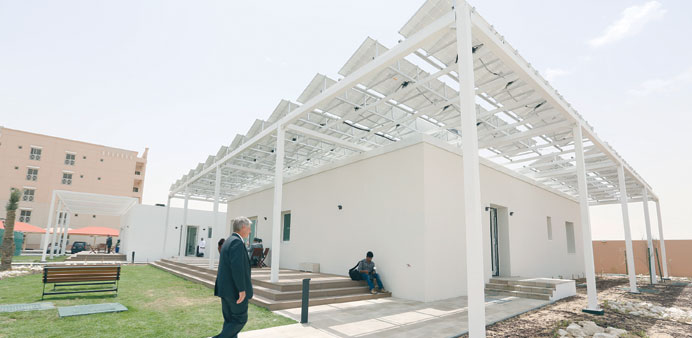|
|
Qatar’s first ultra-low energy villa, a landmark project that could revolutionise the way people think about building homes in the entire Middle East region, was launched at the Barwa City in Doha yesterday.
Following months of planning, design and construction, Qatar Green Building Council (QGBC), Kahramaa and Barwa Real Estate Group (BRE) celebrated the completion of the first Passivhaus (“passive house” in English) villa, marking a major shift in the country’s burgeoning construction industry.
The Passivhaus villa is an ultra-low energy building, derived from a super-insulated airtight building envelope, that requires very little energy for cooling, reducing its environmental footprint.
The building was officially opened yesterday, alongside a conventional villa (or as researchers called it the impassive house), under the joint project “Baytna”.
“This is a landmark day for Qatar’s construction industry,” said Issa al-Mohannadi, chairman of both QGBC and Qatar Tourism Authority (QTA).
“With the opening of Qatar’s first Case Study Passivhaus, we have paved the way for a more sustainable future for generations to come. By testing energy efficient solutions, we support Qatar’s shift from a carbon economy to a knowledge-based economy in line with the Qatar National Vision 2030,” added al-Mohannadi.
Under the Baytna project, two 225sq m villas have been constructed side by side in Barwa City for a comparative study on the benefits of the Passivhaus design in Qatar’s hot and arid climate.
The Passivhaus villa has been designed with all the comforts of modern living while consuming at least 50% less energy, water and operational carbon dioxide emissions.
Barwa Real Estate Group deputy Group CEO Ahmad al-Abdulla said: “Today our ambitions are translated into action on the ground; it is a pleasure and a great success for Barwa and all the partners in Baytna to be launching Qatar’s first Passivhaus, a pilot for more environmentally friendly and energy-efficient real estate around Qatar.”
QGBC’s Dr Alex Amato said that there had been similar experiments conducted in other parts of the world, for example, in Germany and Scandinavian countries but the difference was that there the challenge was to warm the house during the harsh winter climate, unlike here in Qatar where the task is to cool the house with a very low energy consumption.
Low-energy lighting, fittings and home appliances have been installed in the house.
“We are metering and monitoring all subsystems throughout the houses so that we can test what the performance is when it is unoccupied for six months and later with occupants for a year.”
Following this testing and commissioning period of six months, the two villas will be occupied by two similarly-sized families, with at least one child, where further monitoring will take place for one year, as a real life demonstration of environmental principles in practice. The two families are expected to move into the three-bedroom demos by autumn 2013.
The cost of the low-energy villa was estimated to be 16% more than the conventional house. Work began in August 2012 and after eight months of construction, Baytna has successfully limited additional capital costs in construction of the Passivhaus.
As a vehicle for advancing sustainable building research for the region, the project will also serve as a platform for comparative studies on cutting-edge sustainability technology and practice in a variety of areas including; converting sunlight to electricity with a photovoltaic array, alternative irrigation systems, localised water recycling and sustainable soft-landscaping using local species of trees and shrubs. Page 32

